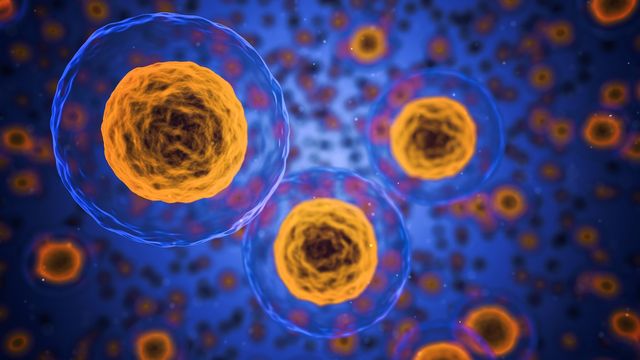UW-Madison researchers have identified CD4/CD8 double positive T cells (DPT) as the cell population responsible for graft versus host disease (GVHD), the most common complication of bone marrow transplants. GVHD limits the effectiveness of the transplant and can be potentially lethal. The team is developing a targeted depletion strategy to address the problematic cells while leaving healthy and helpful T cells to flourish. The goal is to potentially treat patients before the disease has all its detrimental effects. The study won a Best Abstracts Award from the American Society for Transplantation and Cellular Therapy and was presented at the American Association of Immunologists (AAI) and ECOG-ACRIN conferences. The team’s next step is to develop a prediction model and merge the biomarkers into a machine learning algorithm that clinicians can use to understand a patient’s risk of relapse and GVHD. The identification of the cell population responsible for GVHD could make bone marrow transplants safer and more effective, offering hope to people with relapsed blood cancers.
Cell Population Identified as Cause of Graft Versus Host Disease in Bone Marrow Transplants
Researchers at the Carbone Cancer Center have identified the cell population responsible for graft versus host disease (GVHD), the most common complication of bone marrow transplants. GVHD is a potentially lethal complication that limits the effectiveness of the transplant, but now the identification of the cell population that causes it could make bone marrow transplants safer and more effective.
During an allogenic bone marrow transplant, the patient’s immune cells are replaced with the donor’s healthy cells, which can cure the patient’s blood cancer but can also cause GVHD. The condition occurs when donor T cells attack the patient’s healthy cells, resulting in complications that are similar to an autoimmune disease, and potentially lethal.
The study, published in Science Advances, revealed that CD4/CD8 double positive T cells (DPT) are responsible for causing GVHD in immunodeficient mice. The researchers further investigated human patient samples and found that double positive T cells can predict GVHD in over 400 clinical samples from 35 patients. The study also found four other biomarkers that predict not only GVHD but also relapse in general.
Before this study, there was no finite T cell population identified as the cause of GVHD, and therefore all treatment regimens generally impacted the entire T cell population. According to Nicholas Hess, the study’s lead author and scientist at UW–Madison’s Carbone Cancer Center, targeting all T cells is not ideal because they have a beneficial impact on preventing relapses.
The next step is to merge the biomarkers into a machine learning algorithm that outputs a risk prediction model, which clinicians could use to understand a patient’s risk of relapse and GVHD. The identification of the cell population responsible for GVHD could make bone marrow transplants safer and more effective, offering hope to people with relapsed blood cancers.
UW-Madison Scientists Develop Targeted Depletion Strategy to Address GVHD-Causing Cells
Researchers at UW-Madison have identified the cell population responsible for graft versus host disease (GVHD), the most common complication of bone marrow transplants. The team is working on developing a targeted depletion strategy to address the problematic cells in patients while leaving healthy and helpful T cells to flourish, with the goal of potentially treating patients before the disease has all its detrimental effects.
According to Nicholas Hess, the study’s lead author and scientist at UW-Madison’s Carbone Cancer Center, the team is confident that the identified double positive T cells are directly involved in GVHD. Hess says the key step in bringing this discovery to the clinic will be developing a prediction model and targeted depletion strategy. When confidence is gained in the biomarker research and ability to identify patients at risk, the strategy could be used to prevent the disease’s detrimental effects.
The study, which identified CD4/CD8 double positive T cells (DPT) as responsible for causing GVHD in immunodeficient mice, won a Best Abstracts Award from the American Society for Transplantation and Cellular Therapy and was presented at the American Association of Immunologists (AAI) and ECOG-ACRIN conferences. The findings’ potential impact beyond blood cancer and transplantation has created excitement.
DPTs have been found in a variety of chronic human inflammatory diseases, indicating that this is not specific to GVHD. Hess believes that this discovery is very exciting because it gives the team something to study further. The ultimate goal for him is to participate in something that helps patients in some way.
The study is published in Science Advances.
Don’t miss interesting posts on Famousbio










